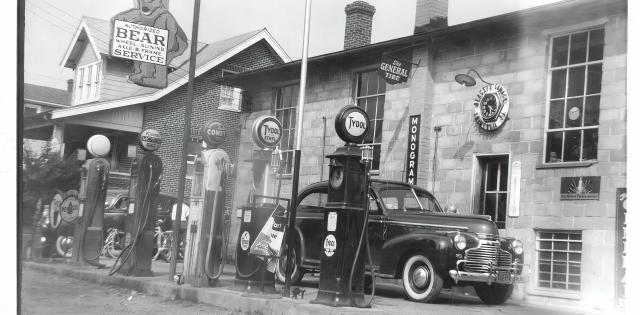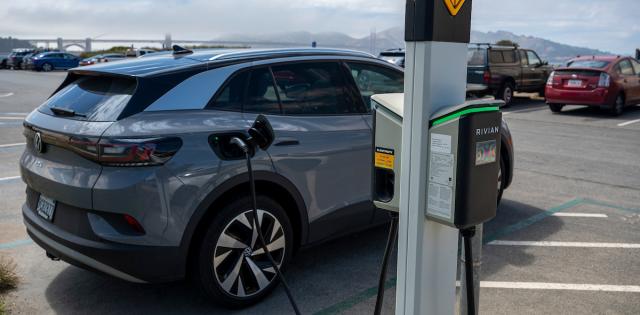The article below is sourced from Bloomberg Wire Service. The views and opinions expressed in this story are those of the Bloomberg Wire Service and do not necessarily reflect the official policy or position of NADA.
Among the sticking points highlighted by United Auto Workers on strike are the billions of dollars Detroit’s legacy carmakers have plunged into stock repurchases.
Now, as the strike extends into its second week, some investors say they’re willing to forgo those coveted share buybacks as the companies face soaring labor costs over the next several years. The UAW is asking General Motors Co., Stellantis NV and Ford Motor Co. for significant pay raises and other concessions in their next four-year contract.
“The companies have room to go higher than their current offer,” said Patrick Kaser, a portfolio manager for Brandywine Global, which has a stake in GM as part of its $54 billion in assets under management as of June 30. “If they pause the buyback because they need to invest in an attractive longer-term plan, that is fine.”
Buybacks are popular with investors and often viewed as signs of management optimism and a healthy balance sheet. They typically result in a short-term boost to the stock price because fewer shares are available in the market.
Labor organizations say companies use buybacks to manipulate stock prices and to reward already wealthy investors, including executives who own shares. Mike Booth, vice president of the UAW, wrote in an op-ed last week that buybacks are “lavishing Wall Street with the results of our labor.”
GM says it has repurchased $14.2 billion in common stock since it returned to the public market in 2010. “We’ve used buybacks and dividends like a great many other companies to return capital to our owners after we’ve invested for growth,” said spokesman Jim Cain.
Stellantis announced in February that it planned to buy back as much as €1.5 billion ($1.6 billion) in shares this year after posting record full-year results. The company said it also would redistribute more than €2 billion to its employees globally.
“Whatever the past, we consider that it is possible to pay fair wages, invest in the future and provide strong returns for shareholders to the extent that the company’s performance is preserved in the interest of all stakeholders,” Stellantis said in a statement. The company declined to elaborate on its buyback strategy.
Ford bought back $3.5 billion in shares from 2012 to 2022, according to data compiled by Bloomberg, though the company — especially the founding Ford family that controls its super-voting shares — prefers to issue dividends. Ford declined to comment.
“There is probably a happy medium where you maybe can stop share buybacks for some time and share that equity with labor and not just shareholders,” said Brian Mulberry, a client portfolio manager at Zacks Investment Management, which owns Ford shares and manages $15 billion in assets.
Scrapping or cutting the dividend, on the other hand, is a non-starter for shareholders. Ford’s annual dividend yield is about 4.8%.
“I do not see an appetite for decreased dividend yield,” Mulberry said. “If interest rates stay over 5% next year, that dividend yield will be important for investors.”
Reducing dividends to conserve cash could trigger a big slide in the share prices, investors said. Discontinuing payouts altogether would force the stocks out of dividend index funds, pressuring them further.
“A dividend cut will be a very bad sign,” Kaser said. “Stopping or cutting them will really be a statement that the companies don’t have extra cash.”
Historic Strike
On Sept. 15, the UAW began its first-ever walkout at plants operated by all three Detroit carmakers. A week later, the union expanded the strike to 38 more GM and Stellantis plants. Ford was spared an escalation after making progress in the negotiations.
A prolonged strike would be expensive and disruptive. It also creates uncertainty, which typically doesn’t sit well with shareholders. GM and Ford lost a combined $20 billion in market value in the two months leading up to the UAW contract expiration.
A 40-day strike against GM in 2019 — the longest since the 1970s — cost the company about $3.6 billion in earnings before interest and taxes, according to RBC Capital Markets. The strike dented revenue at parts suppliers and had a ripple effect on the local economy.
“These labor pressures put legacy US manufacturers at a clear disadvantage. This is why we don’t own them,” said Ivana Delevska, chief investment officer at Spear Invest, which has $10 million in assets under management.
For more stories like this, bookmark www.NADAheadlines.org as a favorite in the browser of your choice and subscribe to our newsletter here:












